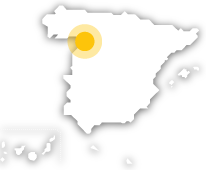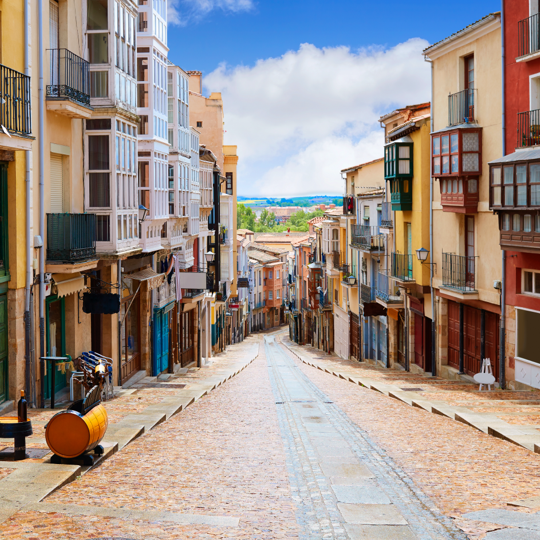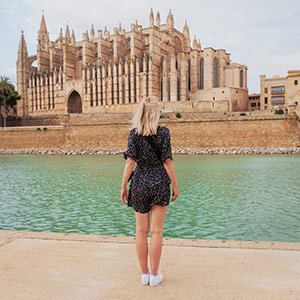What are the wines like?
This area is ideal to grow vines, and the production of high-quality wine has always brought economic sustenance.
The D.O. Tierra del Vino de Zamora provides the geographical borders for the Zamora Wine Route, where winters are very cold and summers are dry and hot. These conditions lead to the predominance of varieties such as Castilian Malvasia, Muscatel, Verdejo and Godello (white wines). Red wines include La Tinta del Pais and Tempranillo, an essential variety.
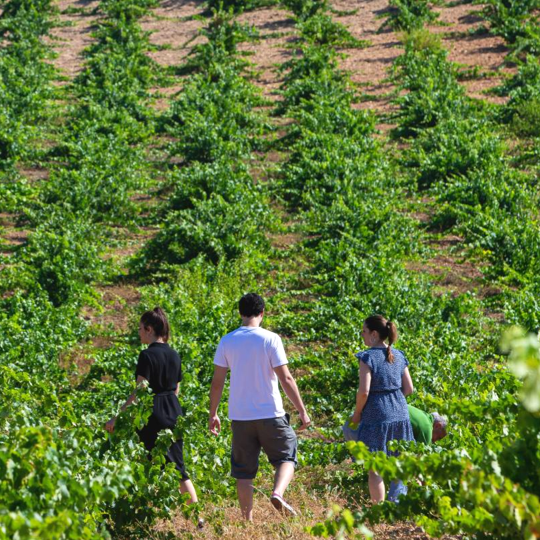
Tourists in vineyards in Zamora, Castile and Leon
©
Asociación Ruta del Vino de Zamora
What I can find
Depending on who you travel with, you can choose from different experiences. For example, if you travel as a family, you can enjoy activities such as "Chocolate Barrels" or "The Magic of Wine". For couples, there are others such as "Delight of Kings" or "Sensory Rest". And for friends, "Encounter on the Route" or "Rest and Emotions".
The environment also invites you to spend the night in beautiful rural accommodation and do outdoors sports with experiences such as "The Cycle Route".
Those that prefer culture and heritage can sign up for "Tradition, Romanesque and Modernism".
And, naturally, the area is perfect for agro-industrial tourism with restaurants, workshops, meetings with the craftspeople, product tasting from the factories themselves, tastings in wineries... Foods such as bread, sweets, cheeses, cured meats and sausages and vegetables such as the Fuentesauco chickpea are examples of traditional cuisine.
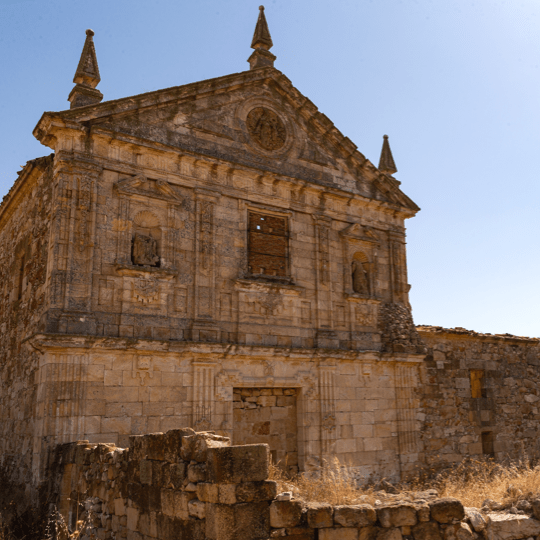
Convent of Santa María del Soto in Villanueva de Campean, Zamora, Castile and Leon
©
Asociación Ruta del Vino de Zamora
How to get here
Within the area of influence of the Duero River, the Land of Wine (as this region is known) extends over an area of almost 1,800 km2 spread over 57 municipalities, 10 of them in the province of Salamanca and 47 in Zamora, including Zamora capital city.
To the north, it connects to León and can be reached via the A-66. To the east, it borders Valladolid and can be reached via the A-11 and the N-122. To the south, it connects with Salamanca and there are several access roads: the A-66, the N-620 or the E-80.


